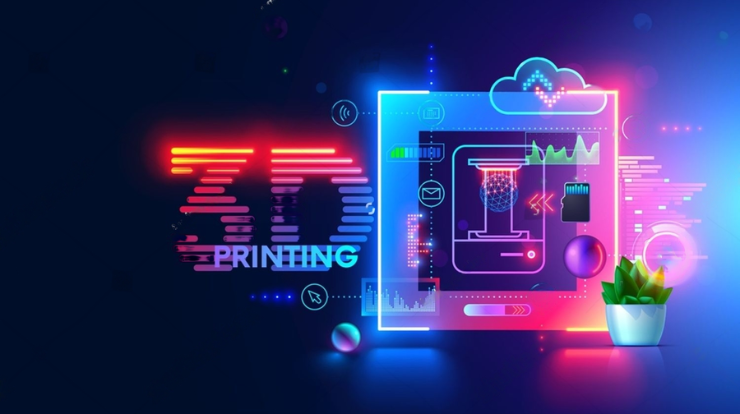Transforming Aerospace Engineering in 3D Printing Dubai
Dubai’s aerospace industry is growing rapidly. With its vision to lead the future of aviation and space exploration, the city is embracing cutting-edge technologies.
Precision 3D printing is one of the innovations transforming aerospace engineering labs in Dubai. This technology is helping to improve design, reduce costs, and accelerate production. Below is an exploration of how precision 3D printing is revolutionizing aerospace engineering in Dubai.
Enhancing Design Flexibility
Complex Geometries and Lightweight Structures
Precision 3D printing enables engineers to create complex geometries that are impossible to achieve with traditional manufacturing methods.
This flexibility is critical for aerospace components, where lightweight structures are essential. Engineers can now design intricate parts that are both strong and lightweight, helping to improve the performance of aircraft and spacecraft.
Rapid Prototyping for Aerospace Components
The ability to create rapid prototypes is a major advantage of 3D printing. Engineers can produce prototypes in days rather than weeks, speeding up the testing and refinement of aerospace components. This helps reduce the time it takes to bring new products to market.
Reducing Production Costs
Material Efficiency
Precision 3D printing Dubai is known for its material efficiency. Traditional manufacturing often involves subtracting material from a larger block, leading to significant waste. With 3D printing, materials are added layer by layer, minimizing waste and reducing costs.
Lower Labor Costs
Traditional manufacturing methods often require skilled labor for multiple stages of production. In contrast, 3D printing is largely automated. Once the design is finalized, the machine can produce the part with minimal human intervention. This reduces labor costs, making the process more cost-effective.
Accelerating Innovation in Aerospace Engineering
Customization of Parts
Precision 3D printing allows engineers to customize aerospace parts according to specific requirements. This is particularly useful for small production runs, where each part may need to meet different specifications. Customization ensures that parts are optimized for performance, leading to better overall outcomes in aerospace projects.
Faster Production Cycles
By simplifying the production process, 3D printing shortens production cycles. Engineers in Dubai’s aerospace labs can produce multiple parts in a single session, reducing the time required for assembly. This is especially beneficial for projects with tight deadlines, allowing for quicker delivery of components.
Improving Component Performance
Strength and Durability
Aerospace components must withstand extreme conditions. Precision 3D printing allows engineers to create parts with enhanced strength and durability. By using advanced materials such as titanium and high-performance polymers, 3D printed components can endure high stress and temperatures, making them suitable for demanding aerospace applications.
Optimized Part Design
With precision 3D printing, engineers can design parts that are optimized for specific functions. For example, they can adjust the internal structure of a component to reduce weight without compromising strength. This level of optimization is difficult to achieve with traditional manufacturing methods.
Advancing Sustainability in Aerospace
Reduced Material Waste
As mentioned earlier, precision 3D printing is an additive manufacturing process. This means that it uses only the material necessary to build the part, reducing material waste significantly. This is especially important in aerospace, where expensive materials like titanium are commonly used.
Energy Efficiency in Manufacturing
3D printing is generally more energy-efficient compared to traditional methods. The streamlined process requires less energy, reducing the carbon footprint of production. This is aligned with Dubai’s broader sustainability goals, where industries are encouraged to adopt eco-friendly practices.
Supporting Local Aerospace Manufacturing
Strengthening Dubai’s Aerospace Industry
Dubai has set its sights on becoming a global leader in aerospace innovation. Precision 3D printing supports this vision by enhancing the capabilities of local aerospace labs. By producing components locally, Dubai reduces its dependence on foreign suppliers, ensuring faster delivery and greater control over quality.
Collaboration with Global Aerospace Leaders
Dubai’s aerospace engineering labs are collaborating with international aerospace companies to integrate precision 3D printing into global supply chains. This collaboration not only brings the latest technology to Dubai but also positions the city as a key player in the global aerospace industry.
Challenges and Future Prospects
Material Limitations
While precision 3D printing offers many advantages, there are still limitations when it comes to the materials that can be used. Not all aerospace-grade materials are compatible with 3D printing technology. However, ongoing research is addressing these challenges, and new materials are being developed to meet the stringent requirements of aerospace applications.
Adoption and Integration
Despite its potential, the adoption of 3D printing in aerospace engineering is still in its early stages. Many engineers and manufacturers are accustomed to traditional methods, and the transition to 3D printing requires investment in new equipment and training.
However, as the technology matures and its benefits become more widely recognized, adoption is expected to increase.
Conclusion
Precision 3D printing is playing a transformative role in Dubai’s aerospace engineering labs. By enhancing design flexibility, reducing production costs, and accelerating innovation, this technology is revolutionizing the way aerospace components are designed and manufactured.
As Dubai continues to invest in aerospace technology, 3D printing will be at the forefront of its efforts to lead the industry into the future. With advancements in materials, increased collaboration, and a focus on sustainability, precision 3D printing is set to become an integral part of Dubai’s aerospace landscape.

